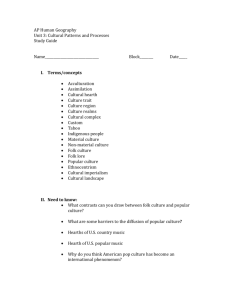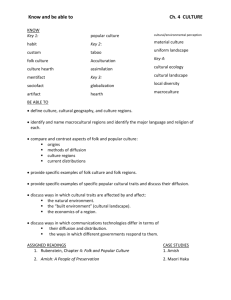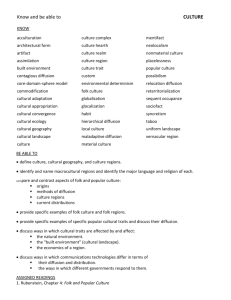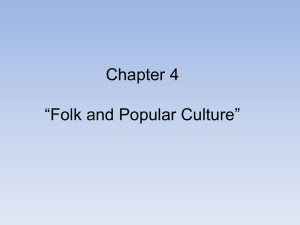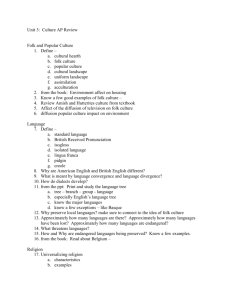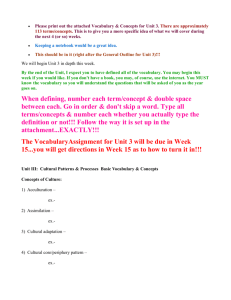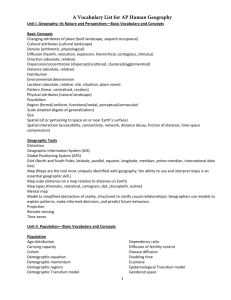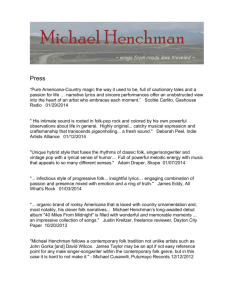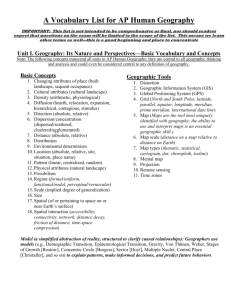AP Human Geography: Folk & Popular Culture Study Guide
advertisement
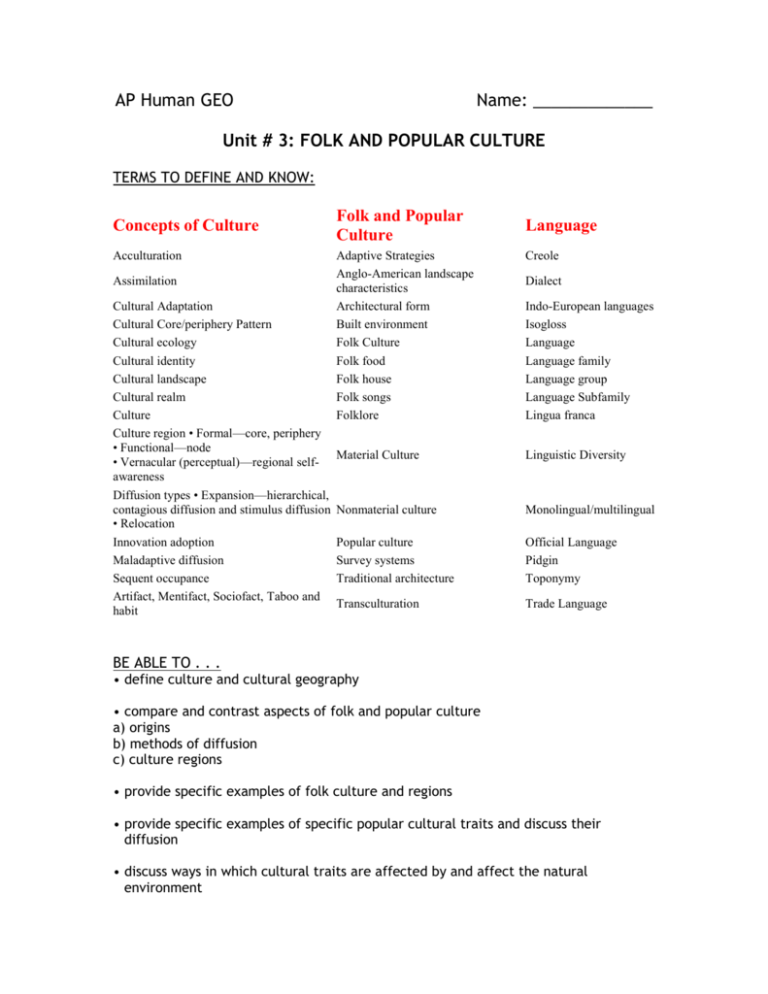
AP Human GEO Name: _____________ Unit # 3: FOLK AND POPULAR CULTURE TERMS TO DEFINE AND KNOW: Concepts of Culture Acculturation Assimilation Cultural Adaptation Cultural Core/periphery Pattern Cultural ecology Cultural identity Cultural landscape Cultural realm Culture Culture region • Formal—core, periphery • Functional—node • Vernacular (perceptual)—regional selfawareness Diffusion types • Expansion—hierarchical, contagious diffusion and stimulus diffusion • Relocation Innovation adoption Maladaptive diffusion Sequent occupance Artifact, Mentifact, Sociofact, Taboo and habit Folk and Popular Culture Language Adaptive Strategies Anglo-American landscape characteristics Architectural form Built environment Folk Culture Folk food Folk house Folk songs Folklore Creole Material Culture Linguistic Diversity Nonmaterial culture Monolingual/multilingual Popular culture Survey systems Traditional architecture Official Language Pidgin Toponymy Transculturation Trade Language Dialect Indo-European languages Isogloss Language Language family Language group Language Subfamily Lingua franca BE ABLE TO . . . • define culture and cultural geography • compare and contrast aspects of folk and popular culture a) origins b) methods of diffusion c) culture regions • provide specific examples of folk culture and regions • provide specific examples of specific popular cultural traits and discuss their diffusion • discuss ways in which cultural traits are affected by and affect the natural environment • discuss the role of racism and ethnocentrism in the understanding of the cultural landscape ASSIGNED READINGS 1. Barron’s, Chapter 3: Cultural Geography 2. Kuby, Chapter 2: Layers of Tradition: Culture Regions at Different Scale Questions: 1. Define folk culture and popular culture. In what ways do folk and popular culture interact? Think of folk culture and popular as “ends of a continuum” and attempt to identify aspects of your locality which exemplify points along the continuum. 2. What is an ethnic neighborhood? Choose an example of an ethnic neighborhood and describe the traditions, customs and traits that set the ethnic group and its neighborhood apart from the popular culture. What are some of the internal and external threats to the local culture of the ethnic neighborhood you have chosen? 3. Think of the cultural landscape of the city or town where you live. Give examples of each of the three dimensions of cultural landscape convergence (1. “globalized architectural forms and planning ideas; 2. widespread businesses (McDonald's) and products; 3. wholesale borrowing of idealized landscape images) operative in the landscape of your community. What attempts are being made to preserve local cultural landscape features against the encroachment of “placelessness.”

